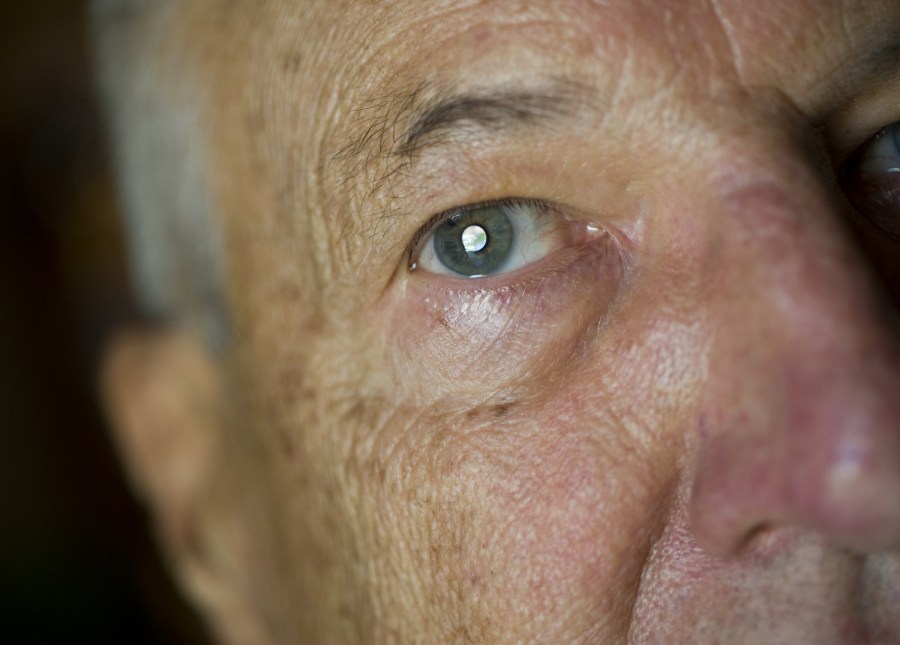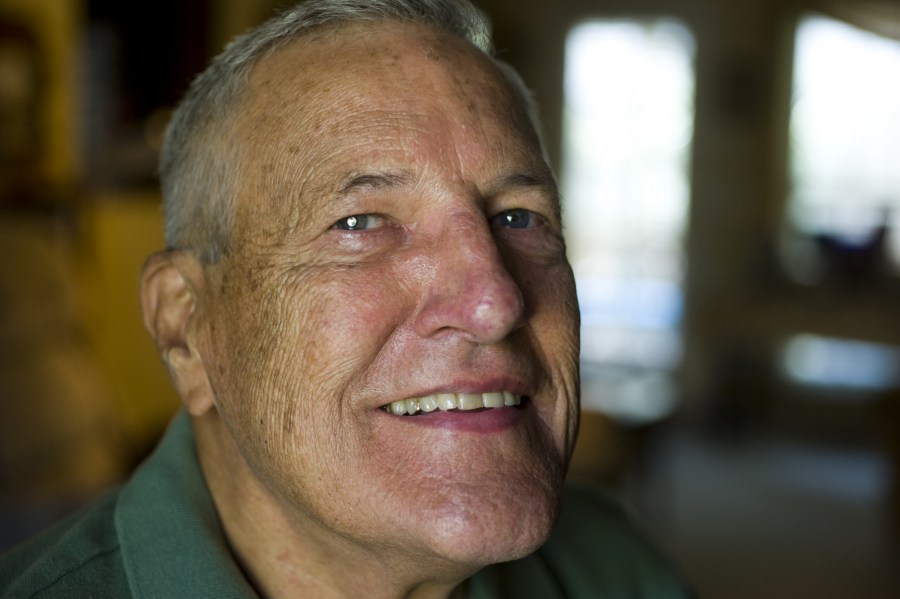
A miniature telescope implanted into Thomas Sarver’s right eye helped improve his vision, which had been affected by age-related macular degeneration. (photo by Joe Howell)
Eye device eases macular degeneration’s impact
Once upon a time, when Thomas Sarver read stories to his grandchildren he couldn't always make out the words on the pages of their favorite books.
But thanks to a miniature telescope implanted into Sarver's right eye by ophthalmologists at the Vanderbilt Eye Institute, the 75-year-old is able to do more than guess what the words on the page are. Now he can actually read them.
“There are so many things I would not have been able to do if I had not received this device,” said Sarver. “Nothing can be as bad as having a big hole in your central vision, and it was constantly getting worse.
“Every time I had an eye exam, I needed new glasses,” he said. “It was frustrating knowing your eyesight was going and there was nothing much I could do about it.”
In 2003, Sarver became one of 219 patients to enroll in a multi-center clinical study to test a device designed to improve the sight of patients with age-related macular degeneration (AMD), the leading cause of irreversible vision loss and blindness in people age 65 and older.
The device — which recently received federal approval — is an implantable miniature telescope, or IMT, that is surgically inserted into one eye to replace the natural lens and provide a magnified image.
Vanderbilt Eye Institute has been contacted about being one of the treatment centers to provide the implant to patients in the United States.
“There is so much interest in this procedure,” said Paul Sternberg, M.D., chair of Ophthalmology and Visual Sciences at Vanderbilt and director of VEI. “This is something that will be helpful to a subgroup of patients with advanced age-related macular degeneration.
“By no means is it a cure,” said Sternberg, “but it will help optimize the visual function in people with severe visual impairment.”

Thanks to the Vanderbilt Eye Institute, Thomas Sarver can read to his grandchildren again. (photo by Joe Howell)
AMD is a condition that damages the center of the retina or macula and causes the loss of vision in the center of the visual field. Nearly 8 million people in the United States are affected by the disease.
But for many patients like Sarver, an opportunity to “see” again was a chance he could not let pass.
“I remember saying, as my eyesight worsened, if I can find something that would help me, great,” said Sarver. “But if someone can learn something from me, then it was even better.
“The last time my eyes were tested I didn't need a new prescription and that was soon after the implant. My eyes have definitely stabilized. One of the best things is now I can watch football on television and see the names on the backs of the jerseys.”
But restoring vision is not as simple as implanting the miniature telescope, said eye specialists at VEI.
Patients seeking the implant must first undergo extensive training with a low-vision specialist and agree to post-surgical follow-up for further training.
“There are a few challenges with this device,” said Jeffrey Sonsino, O.D., F.A.A.O., assistant professor at VEI's Center for Sight Enhancement. “We know that the implant improves vision but we also caution that there is a period of adaptation. Patients learn to use one eye as a telescope (to magnify images) and the other eye is for peripheral vision. That takes some getting used to.”
The IMT will only be available for those patients age 75 and older who have irreversible AMD, are no longer candidates for drug therapy and have not had cataract surgery in the eye in which the device will be implanted.













